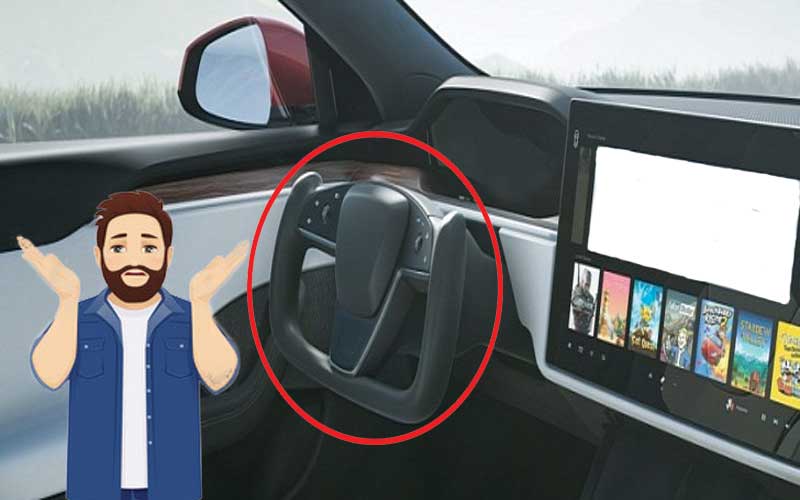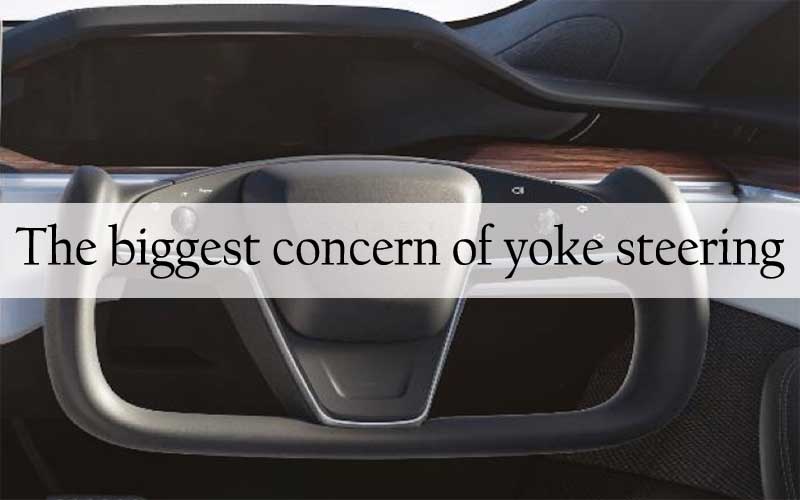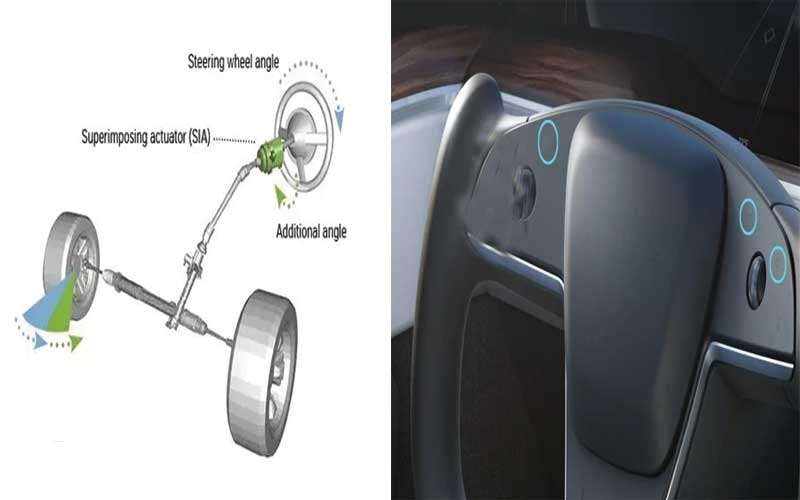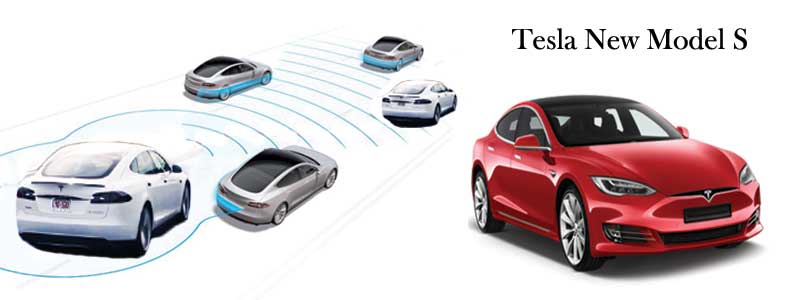KITT steering has fascinated all of us since childhood, isn’t it correct? But we never thought of the downsides, did we? But, it’s not practical to decide over fascination. Practicality refers to the feasibility, and safety has a role in feasibility, I mean, a great role to play.

Tesla has introduced yoke steering in its modern cars that seems to be quite exciting. But why have they done it, and why haven’t they thought about the safety risks that it could impart?
The designers come up with something new every day, and people without serious considerations opt for those designs. Why would we need yoke steering when we have comfortable round steering?
The Biggest Concern

While taking turns and even big turns, you have to reposition your hands several times. This process is called shuffle-steer. With a yoke steering, it is going to be very difficult.
Taking bigger turns can make you lose control with a yoke steering, and it’s not a good thing while driving because you might be grasping the yoke with one hand and air with the other one. It would be seriously awkward and annoying.
Moreover, the automatic adjustment of the steering after turning can do a lot. It can even cause a thumb fracture or wrist problem.
Imagine getting struck by the fast-spinning yoke. Some people have experienced it, and they report; it causes terrible pain.
Lastly, what if faced a minor impact? The face can strike the steering! In the case of yoke steering, there is a chance of some terrible injury.
Comparison with Formula 1
Mostly, the people who argue in favor of this addition talk about formula one and other racing cars. But the people who are against the perspective mention that there is a huge difference in the steering ratios.
Racing cars like F1 have a very swift steering ratio. For instance, on a racing car, to move from one end of the road to the other, you would only need a 180-degree rotation.
But, in the case of general cars or streetcars, the turning is fine; like you have to go 900-degrees for the same job that took a racing car, just 180-degrees.
Dealing with the Swift Steering Ratio

If racing cars have rectangular or yoke steering with a high ratio, then at the same time, the person driving them have a lot of experience for those steering, and they know how to control steering that can cause a great variation for just a 180-degree turn.
Street drivers do not have that expertise, and honestly, they don’t need that. Fine turning means that you have to spin more for a small turn, and that is usually good for street drivers as it keeps them engaged.
Also, in the streets, you do not actually need that sharp turning sensitivity. You drive normally and be at ease.
NHTSA Safety Questions

Just after the release of this design, the National Highway Traffic Safety Administration (NHTSA) that is part of the transportation department of the US, plans to speak with Tesla about the yoke design because it has become a concern.
Since many of the critics have talked against this design, another important and notable aspect is the touch screen control along with the yoke steering. Operating on the touchscreen can frequently distract people from the view.
If Self Driving
The idea of yoke steering is acceptable if the car is completely autonomous, or you can say; self-driving supra drift car. In that scenario, this small steering imparting great aesthetics and design will prove the right decision.
Because driving with this yoke steering can be difficult in terms of grip and control and, of course, safety, but more improvisations might make it a feasible option.
Wrapping Up
Driving with round steering is much easier because when you take a long turn, the re-adjustment of hands is very easy as the steering slides through your hands.
The idea of a yoke steering can be quite annoying if you have to drive the car yourself. The readjustment can not only cause injury but also difficult to control at times. Only the self-driving option can go in favor of this design, but sadly, we haven’t gone that far.
Reviewed Recently



